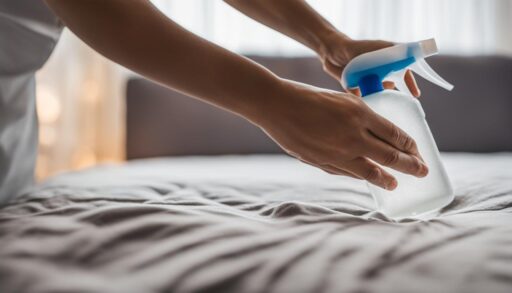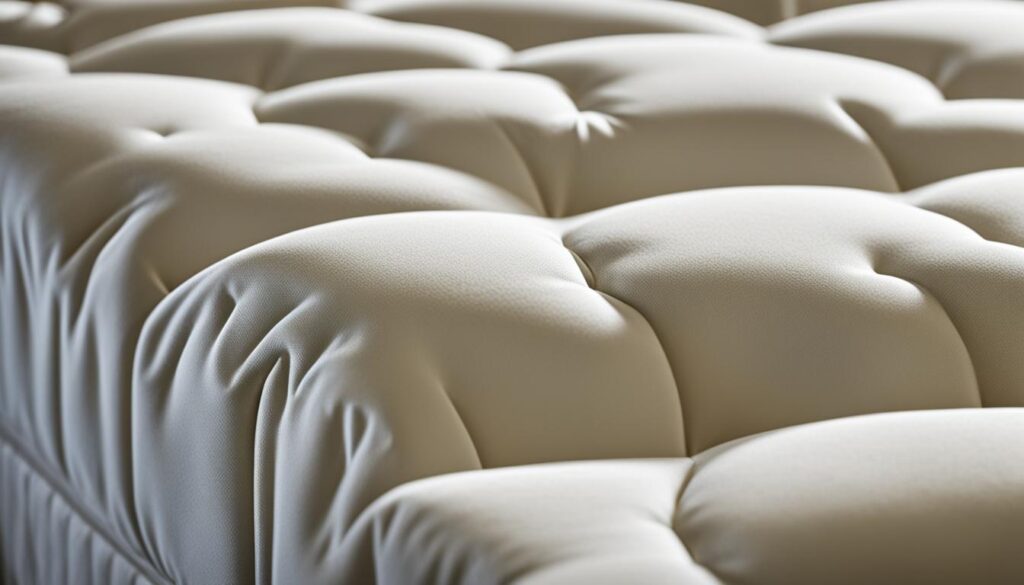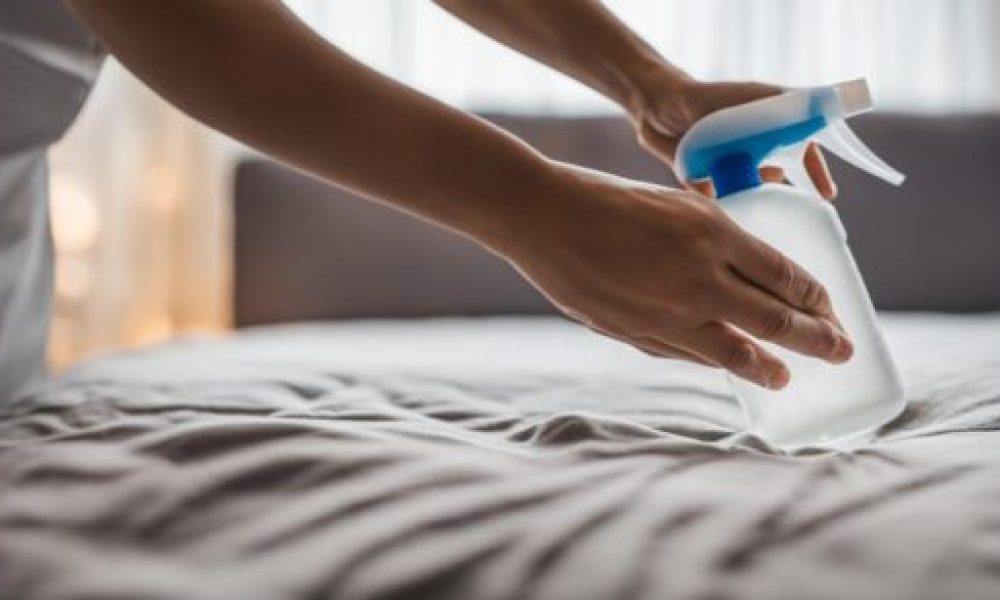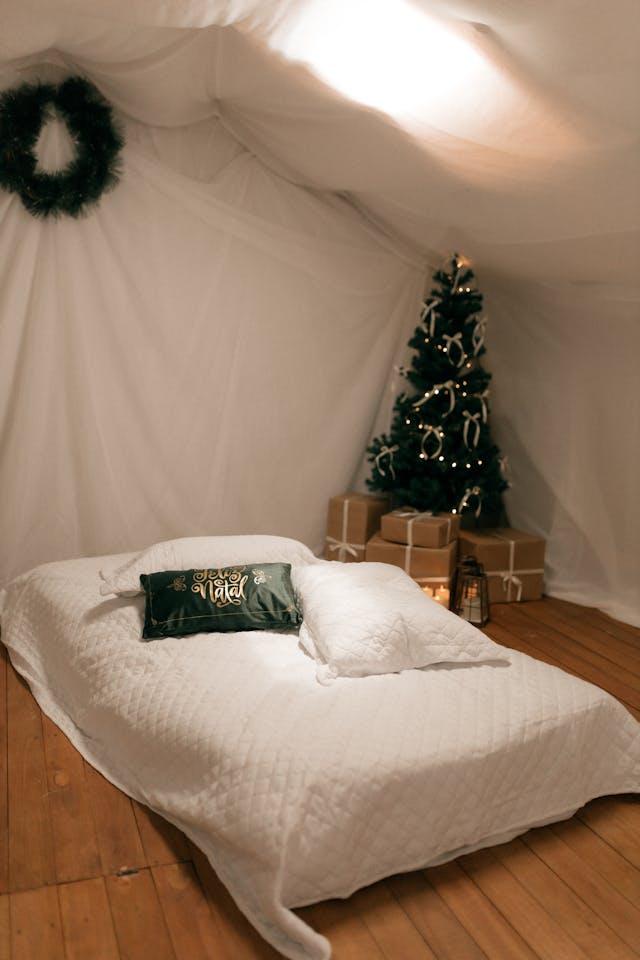Spot Clean a Mattress
Spot clean a mattress the right way to keep your sleep sanctuary fresh, hygienic, and supportive—no harsh chemicals needed.
Key Takeaways
- Vacuuming removes dust and debris before stain treatment
- DIY solutions like baking soda and vinegar work wonders naturally
- Proper drying and airing out are essential to prevent mold
- Regular spot cleaning extends mattress lifespan and comfort
How to Spot Clean a Mattress by Vacuuming First
Before applying any cleaner, spot clean a mattress by giving it a thorough vacuum. Use a brush attachment and slowly work across the top, seams, sides, and corners. This removes crumbs, pet hair, and dust that might otherwise smear when wet.

Best Vacuums to Spot Clean a Mattress
| Brand | Features | Price |
|---|---|---|
| Brand A | Handheld, lightweight, strong suction, HEPA filter | $99 |
| Brand B | Upright, multi-surface cleaning, pet hair tool | $149 |
| Brand C | Cordless, portable, long battery life | $199 |
How to Spot Clean a Mattress by Treating Stains
Spot clean a mattress with homemade solutions for common stains. For protein-based stains like sweat or urine, mix 1/4 cup hydrogen peroxide, 1 tbsp dish soap, and 1 tbsp baking soda. Apply gently and blot after 30 minutes.
DIY Paste to Spot Clean a Mattress
| Ingredients | Measurement |
|---|---|
| Hydrogen Peroxide | 1/4 cup |
| Dish Soap | 1 tablespoon |
| Baking Soda | 1 tablespoon |

How to Spot Clean a Mattress Using Baking Soda
To refresh your mattress naturally, spot clean a mattress with baking soda. Sprinkle it generously across the surface, let sit for several hours, then vacuum it off. It absorbs odor, moisture, and leaves your bed fresh.
- Remove all bedding
- Sprinkle baking soda over the mattress
- Rub in gently with hands or brush
- Let it sit 4+ hours or overnight
- Vacuum thoroughly

Why Baking Soda Helps Spot Clean a Mattress
- Safe and gentle: Great for allergies and sensitive skin
- Odor neutralizer: Removes sweat and musty smells
- Moisture reducer: Helps prevent mold
- Eco-friendly: No toxins or chemicals
How to Spot Clean a Mattress by Airing It Out
After cleaning, always air out your mattress. This speeds up drying, eliminates hidden moisture, and kills bacteria. If possible, move the mattress outside into the sun—nature’s best disinfectant. Indoors, open windows and use fans.
“Airing out your mattress not only helps eliminate odors, but it also contributes to a healthier sleep environment.” – Sleep Experts
Extra Tips to Spot Clean a Mattress by Airing It Out
- Pick a sunny, dry day
- Use a fan for airflow indoors
- Rotate the mattress
- Keep pets off while airing
- Ensure mattress dries completely before use

How to Spot Clean a Mattress and Keep It Protected
Once you spot clean a mattress, extend its freshness by rotating or flipping it every 3–6 months. Always use a waterproof mattress protector—it defends against spills, allergens, and dust.
| # | Why It Matters |
|---|---|
| 1 | Prevents uneven wear |
| 2 | Minimizes sagging |
| 3 | Keeps mattress cleaner longer |
| 4 | Protects from dirt and spills |
| 5 | Preserves the warranty |
How to Spot Clean a Mattress Made of Memory Foam
If you own a memory foam bed, it’s essential to spot clean a mattress with care. Memory foam absorbs moisture easily, so always blot gently and avoid soaking.

Why You Should Spot Clean a Mattress Regularly
Regular spot cleaning helps reduce allergens, eliminate odors, and preserve the integrity of your mattress over time. It also enhances the hygiene and comfort of your sleep environment.
Signs You Need to Spot Clean a Mattress or Replace It
Even with routine care, mattresses have a lifespan. If you notice sagging, odors, or persistent allergy symptoms, it may be time for a replacement instead of another spot clean.
Final Thoughts: Why You Should Spot Clean a Mattress
Spot cleaning a mattress keeps your sleep environment cleaner, healthier, and more comfortable. From vacuuming and baking soda to gentle blotting and flipping, small habits add up to big benefits for your rest and wellness.
FAQ
How often should I spot clean a mattress?
- Clean stains as soon as they happen. General spot cleaning every 2–3 months is a great habit.
Can I use regular cleaners?
- Avoid harsh chemicals. Use natural or enzyme-based cleaners for best results.
Learn more in our deep-cleaning guide, explore memory foam care tips, see how to remove mattress stains, and discover ways to freshen your mattress.
External resources:
Sleep Foundation |
Good Housekeeping |
Martha Stewart























